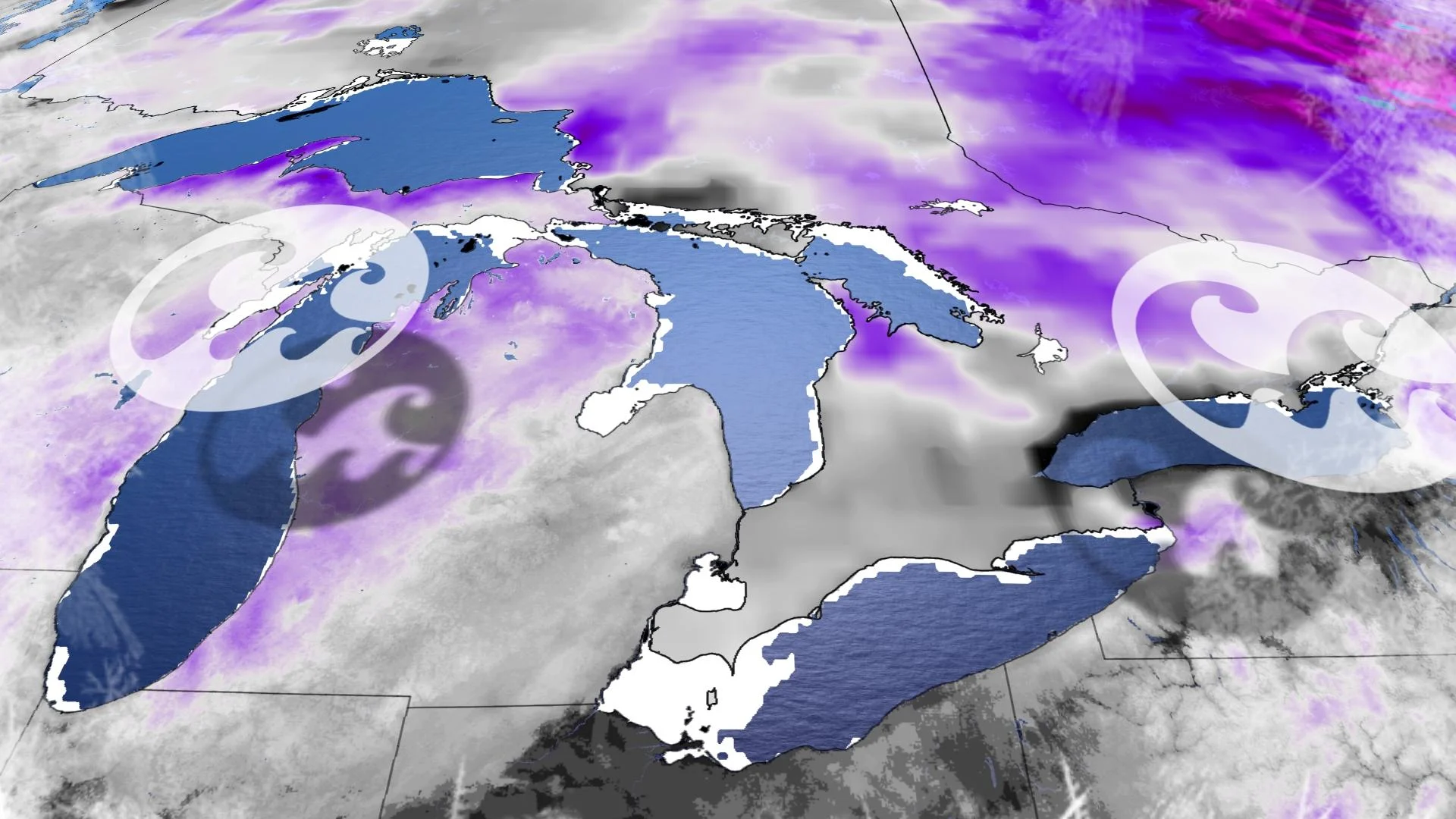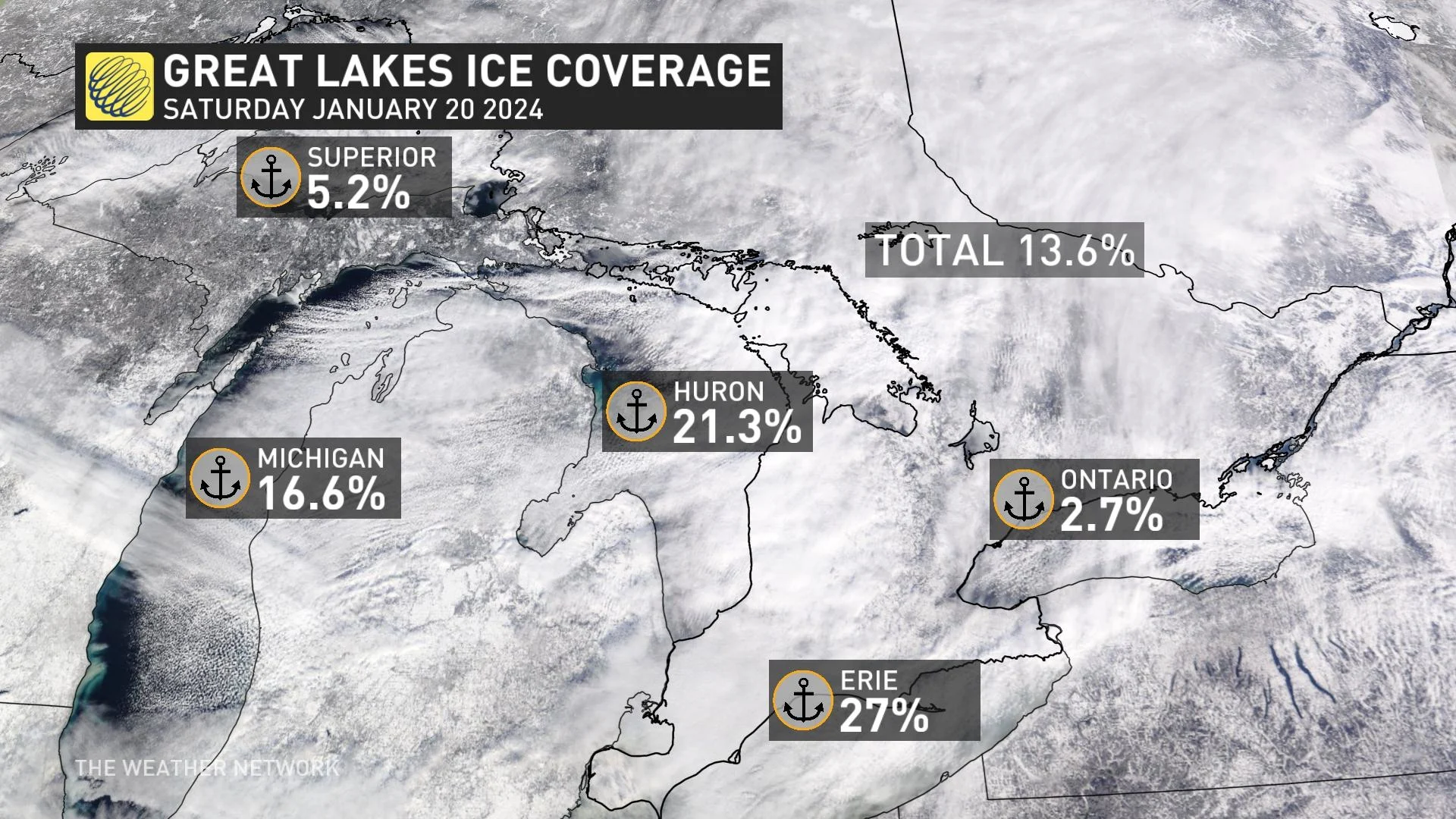
Why a 566 per cent ice increase on the Great Lakes isn't monumental
The Great Lakes have seen a whopping 566 per cent rise in ice coverage since last weekend, thanks to the frigid temperatures in the region. However, that didn't translate into significant, additional ice cover
What a seven days it has been for the Great Lakes region.
Over the last week, Ontario has been plagued by prolonged, multi-day, lake-effect snow squalls –– dumping upwards of 50-100 cm in parts of the province.
Stateside, centred off of Lake Erie, the lake-effect snowfall was measured in feet in Buffalo, N.Y. That prompted the National Football League (NFL) to move its game by a day. The event was only able to proceed with the aid of scores of volunteers who dug the stadium out from underneath heaps of snowfall.
DON'T MISS: Sick of winter? Look on the bright side: we’re halfway to spring!
On top of that, the Great Lakes have been hit with a blast of bitterly cold air, originating from the Arctic.
The air temperatures, which have plunged into the -20s at times, have been favourable for ice buildup on the Great Lakes. In fact, there has been a 566 per cent increase in ice coverage since Saturday, Jan. 13.

On that day, ice coverage was rather sparse, ranging from 0.5 per cent on Lake Ontario to 4.7 per cent on Lake Huron. These values were well-below seasonal for ice coverage, and similar to basin levels experienced in 2021, 2016, 2012 and 2011 for this time of year.
Then, after nearly a week of frigid-cold temperatures, the ice coverage jumped. As of Saturday, Jan. 20, the Great Lakes received a noticeable surplus of ice coverage.
Lakes Erie and Huron received the most coverage during this time period, jumping to 27 and 21.3 per cent, respectively.
Before your jaw drops to the floor, a 566 per cent rise isn't as impressive as it sounds.

In fact, it is a modest ice-cover spike that started from sparse coverage. To put the percentage into comparison, it would be equivalent to your savings account going from 50 cents to $2.83. A 566 per cent increase, yes, but you're not particularly rich after that newfound money.
When you look at the current ice cover for the Great Lakes, the basin has an average of 13.8 per cent as of Jan. 20 –– noticeably below the typical median for this time of the year (above 20 per cent).
The highest reported ice coverage for this time of year goes to 1979 with 49 per cent total, and the minimum for this date was set in 2021, with just 1.9 per cent.

The cold and new ice cover comes after an unusually mild December brought a slow start to winter across Canada.
In the Great Lakes region, the warm temperatures led to record-low ice cover across the five lakes to start 2024, according to the National Oceanic and Atmospheric Administration's (NOAA) Great Lakes Environmental Research Laboratory.
It's looking unlikely we will reach the average peak ice coverage of just more than 40 per cent this year.
It's also highly improbable we will challenge the all-time ice coverage record, which is safe by a wide margin. In 1979, the Great Lakes almost entirely froze over. There was 95 per cent ice coverage reported on Feb. 19, 1979. Ice coverage that year lasted into mid-May.